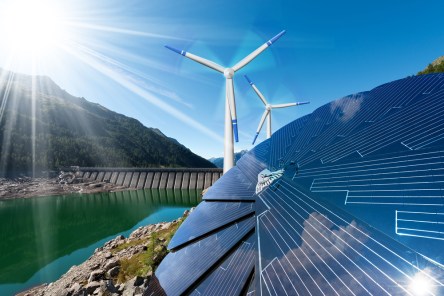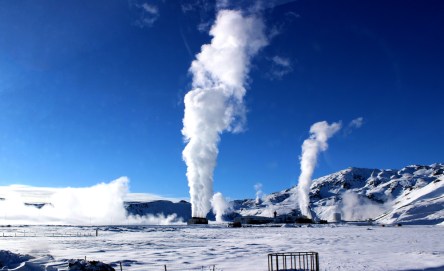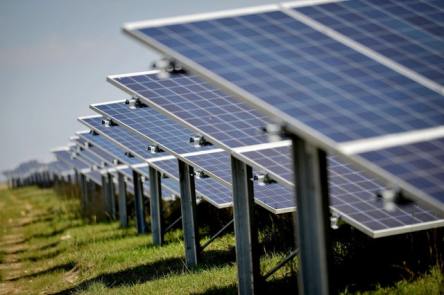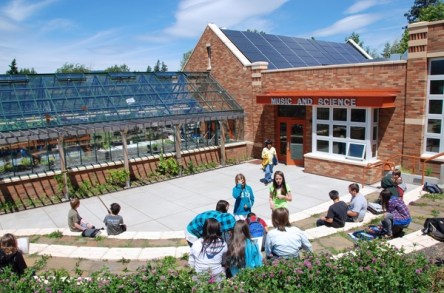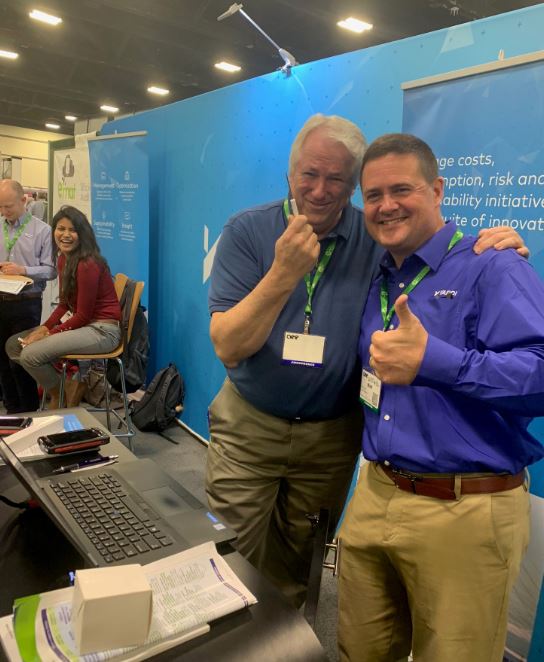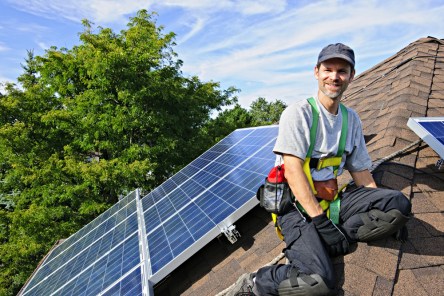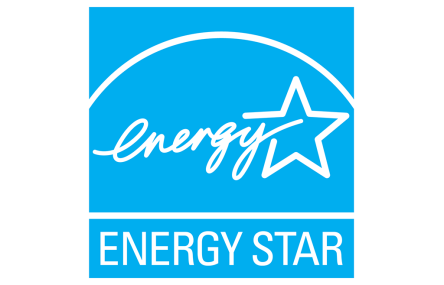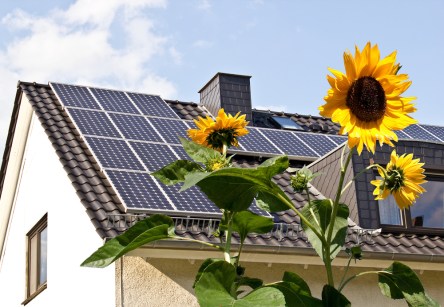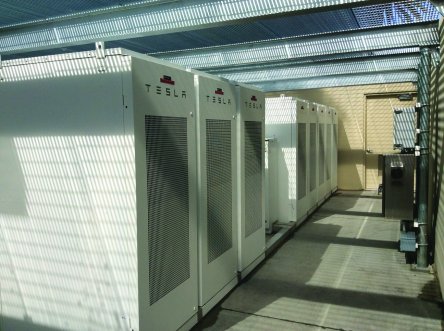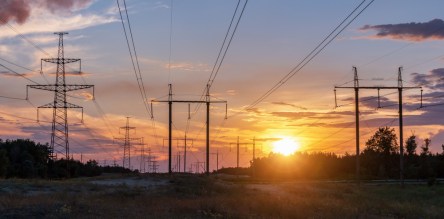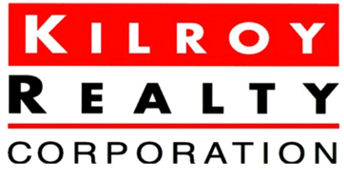Christy Cannon, a Yardi Energy account executive and holder of the Certified Energy Manager designation from the Association of Energy Engineers, discusses how integrated systems are streamlining building operations. The exchange below includes excerpts from an interview published in Commercial Property Executive. Q: How do building managers perceive the network of physical objects that can sense, communicate and interact with the external environment, otherwise known as the Internet of Things (IoT)? A: The principal appeal is the opportunity to reduce operating costs, increase NOI and ultimately increase property value for the building owner. Our retail clients also face pressure to provide space that helps their tenants cultivate an image of environmental stewardship. I see people who do the heavy lifting every day being excited about IoT. It’s like giving them a superhero cape. IoT devices help facility managers perform predictive maintenance and optimize heating, ventilation and air conditioning (HVAC), which not only reduces the number of comfort calls they have to deal with but also lowers repair and maintenance costs and extends the life of expensive equipment. Energy managers can view utility consumption in real time. They can manage peak electric demand and save 20% or more off their unregulated utility bills, or immediately identify a water leak. Q: What’s the relationship between the IoT and artificial intelligence (AI)? A: The IoT architecture looks something like a wheel with hundreds or thousands of spokes, with each spoke representing an IoT device. Multiple network structures enable IoT devices to get their data to software that can use it. AI takes all the big data buildings collect from IoT devices, building automation systems and submeters, and learns how to predict future outcomes or make decisions based on the best available options. Consider all the factors that contribute to a building’s...
Senior Living Utilities...
Forecasts + Trends
Keeping up with utilities and energy costs is a hurdle for most senior living communities. Argentum senior living association recently reported on industry forecasts and trends: about 49 percent of decision makers said energy and utility costs are a moderate challenge for their business. About 5 percent of their peers reported energy and utility costs as a significant challenge. Electricity on the Rise The challenge arises from an increase in energy and utility costs. U.S. Energy Information Administration (EIA) reports that commercial electricity prices increased 3 percent from 2016 to 2017. From 2017 to 2018, businesses witnessed an additional 1 percent increase. In 2019, EIA projects prices to increase an additional .6 percent to 10.86 cents per kilowatt hour. Not all regions are affected equally. The Pacific region may experience a 3.5 percent increase above the national average in 2019. On the lower end of the spectrum, the South Atlantic may experience an increase of only 1.5 percent. Some regions will enjoy a decline in costs. The West South Central may be relieved with a drop of -3.4 percent and New England with a drop of -2.4 percent. Natural Gas Projections The national average for gas prices is expected to average $8.02 per thousand cubic feet in 2019, up 1.5 percent from 2018. Regional variations above the national average include West North Central at 6.4 percent, East North Central at 5.9 percent, and Mountain at 4.2 percent. New England may receive an average price drop of -5.5 percent as well as the Middle Atlantic at -2.7 percent. “The declines won’t be enough to offset the sharp increases registered in 2018,” warned the report. Making Changes Overall, utility costs by square foot varied drastically. Some senior living communities reported costs as low as 69 center...
Energy Snapshot
What's in store for 2019?
The Balance Sheet compiled prognostications on some key energy issues: Coal stays stable. After a two-year decline, global demand picked up in 2017 and 2018. China accounts for about half of the world’s consumption, and growing demand in India and Asian countries is offsetting declines in the U.S. and Western Europe. The U.S. Energy Information Administration (EIA) forecasts that the country’s electricity generation share from coal will average 26% in 2019, down from 30% in 2017. Oil retreats. The International Energy Agency and OPEC cut their forecasts for global oil demand growth in 2019, reflecting lower economic growth assumptions. The last time world oil consumption fell was in 2008-09, driven by surging prices and the recession. U.S.’s natural gas role grows. New liquefied natural gas (LNG) plants in Louisiana, Texas and Georgia are scheduled to come online, doubling U.S. LNG exporting capability. China is a key driver of demand as the world’s largest gas importer. EIA expects the share of U.S. total utility-scale electricity generation from natural gas-fired power plants to be 35% in 2019, up from 32% in 2017. Politics play out. Climate politics will ramp up in the U.S. as the 2020 presidential election campaign gears up. In December 2018, leaders in the House of Representatives announced plans to establish a new panel, the Select Committee on the Climate Crisis. ‘Smart’ gets bigger. Investors and building managers will continue making green practices a core part of their business. “’Smart’ buildings are becoming more common because of new technology, which impacts building operations, and provides both efficiencies and connectivity which is increasingly being sought by tenants,” says the Counselors of Real Estate, an international property professionals organization. The Urban Land Institute, a nonprofit research and education group, adds, “Real estate has been proactive...
Not just hot air
Geothermal's potential
Look up and there’s the sun, whose rays can be captured and converted into electricity. Peer down and see fossil fuels, the engine for much of the world’s economy. You need to burrow even further to find another key source of energy, one that’s driven by the molten essence of the Earth. Geothermal energy originates from the heat at the planet’s center. It can be captured as a source of electricity to heat and cool buildings with geothermal heat pumps, which transfer heat to buildings by pumping water or a special fluid through pipes just below the Earth’s surface. Geothermal energy can also generate electricity through geothermal power plants using wells drilled 1 to 2 miles deep into the Earth to pump steam or hot water to the surface. Tapping the Earth’s internal heat dates back thousands of years, with Roman, Chinese and Native American cultures using hot mineral springs for bathing, cooking and eating. The first geothermal plant, built in Italy in 1904, used steam to turn a turbine that powered five light bulbs. Today, more than 20 countries generate geothermal energy, according to National Geographic. Iceland and the Philippines meet nearly one-third of their electricity demand with geothermal energy, while18 power plants at the Geysers Geothermal Complex north of San Francisco comprise the world’s largest geothermal installation. The U.S., the global leader for installed geothermal capacity, provides more than 3.7 gigawatts to the national grid, according to the U.S Department of Energy. Although geothermal offers an environmentally friendly, renewable, reliable and stable energy source with the smallest land footprint of any major power source, it does have its drawbacks. These include the risk of releasing greenhouse gases that tend to congregate near geothermal power plants, power plants’ effect on fragile land stability, high...
Cleaner Trucks Initiative...
NOx Regulations
A recent proposal to tighten nitrogen oxide (NOx) emissions aims to improve air quality. As a side effect, the changes will undoubtedly impact businesses. Can businesses expect to see shipping prices increase as fleet overhead rises? NOx is a type of air pollution formed during the combustion process in motor vehicles. The particulates have an adverse reaction on the environment and human health. By 2025, the Environmental Protection Agency (EPA) calculates that more than 33 percent of NOx emissions will spew from heavy-duty trucks. To decrease those projected emissions, the EPA is drafting a new set of NOx emission regulations. The EPA recently initiated the Cleaner Trucks Initiative. The legislation updates federal NOx regulations, which have not been revised since 2001. Additionally, the proposal creates a single federal rule for an incongruent batch of federal and state guidelines. Several air agencies have petitioned the EPA for clearer guidelines and tighter standards for the trucking industry. The new plan will help to streamline compliance standards while promoting transport efficiency. The resulting changes will result in less particular matter and cleaner air. “The Cleaner Trucks Initiative will help modernize heavy-duty truck engines, improving their efficiency, and providing cleaner air for all Americans,” said Acting Administrator Andrew Wheeler said during a press conference. The initiative builds upon the success of previous legislation. Between 2007 and 2017, NOx emissions declined by 40 percent. The new challenge is to continue NOx emission decline without hindering economic growth. John Mies, manager of corporate communications for Volvo Group North, has been a vocal supporter of the proposal. Past legislation has been “challenging but practical” he said. He added, “This is a great opportunity to update and streamline the certification and compliance processes, ensuring a focus on real-world emissions control with minimal impediment...
Sustainable Slopes
Report on Resorts' Energy Efficiency
While offering mountains of fun in a winter wonderland, ski resorts also take sustainability seriously. Almost 200 resorts, more than 75% of the U.S. total, have endorsed “Sustainable Slopes,” the National Ski Areas Assn.’s (NSAA’s) Environmental Charter that incorporates principles for ski area planning, operations and outreach. As climate change concerns and consumers’ environmental awareness grow, NSAA and other ski resort stakeholders are devising strategies to “help ski resorts transfer the concept of sustainability from one involving a few disparate energy and efficiency projects to a comprehensive a holistic way of doing business, and one that will seriously enhance the long-term prospects of the areas that adopt them,” as described by the ski magazine Powder. The latest annual report from NSAA, a trade association for alpine resorts, summarizes progress in water conservation, energy efficiency, renewable energy, waste reduction and recycling made by more than 300 ski areas that responded to a survey. One destination highlighted in the NSAA annual report, Boreal Mountain Resort & Soda Springs in California, has pledged to reduce its 2011 emissions levels by 25% by 2020. Resort managers retired less efficient vehicles, retrofitted night lighting infrastructure and installed solar panels that will generate 325,000 KwH annually. Another resort, Montana’s Bridger Bowl, offers free electric bus service on weekends as an alternative to single-occupant vehicles. And Copper Mountain Ski Resort in Frisco, Colo., installed electric vehicle charging stations, commingled recycling, composting and scrap steel recycling, and completed a building lighting retrofit. Opportunities for sustainability extend to a ski resort’s sine qua non: snow. An NSAA fact sheet notes that while snowmaking isn’t considered a consumptive act—most of the water diverted from streams for snowmaking returns to the watershed—opportunities abound to execute the process more efficiently: employing efficient snow-guns to increase the...
Charged Up
ELECTRIC VEHICLES + ENERGY STAR
ENERGY STAR® certifications have gone mobile. Originally geared toward properties and consumer products, the U.S. Department of Energy’s (DOE’s) efficiency program now includes a scoring system for electric vehicle (EV) charging stations. In December 2016, the U.S. Environmental Protection Agency (EPA) finalized its inaugural ENERGY STAR specification for electric vehicle chargers. An ENERGY STAR-certified charging station is defined as using 40% less energy than an uncertified one. As EV technology increases its foothold in the marketplace, its capabilities and ENERGY STAR endorsement offer substantial cost, convenience and sustainability benefits. Moving toward EV-compatibility EV sales are expected to top 1 million by 2020, up from about 200,000 in 2017. Some observers predict EVs will be the dominant mode of propulsion for cars by 2030, making charging an increasingly significant value consideration for multifamily and commercial property owners. Driving EVs and using ENERGY STAR-certified chargers can produce: Savings—EVs cost about half as much to drive per mile than standard gasoline-powered vehicles, according to this calculator. Property owners hosting charging stations for tenants and customers can control costs by anticipating the need for new EV equipment, upgrading electrical service to accommodate it, taking operations and maintenance costs into account, and researching incentives that make installations easier and less expensive Efficiency—EVs convert about 59–62% of the electrical energy from the grid to power at the wheels, whereas conventional gasoline vehicles convert about 17%–21% of the energy stored in gasoline to power at the wheels Convenience—Most EV charging happens at home or work, giving property managers who offer this capability a competitive advantage. But what if those places aren’t available? Locate the nearest public charger location in the U.S. here Smart technology—Some ENERGY STAR-certified EV charger models use Wi-Fi technology for remote power monitoring and control of the charging state...
CA Benchmarking
Yardi Smart Energy Suite is Ready
A California energy benchmarking law going into effect next June requires multifamily property owners to complete a potentially daunting array of information gathering and reporting requirements. Yardi’s energy management software and experts stand ready to make the process easy and painless. Under the mandate, known as AB 802, owners of multifamily buildings with more than 17 units, or gross floor area of 50,000 square feet, must report information on energy use from all energy meters using ENERGY STAR® Portfolio Manager®. Reports to the California Energy Commission for 2018 are due to the California Energy Commission on June 1, 2019, and annually thereafter. Similar requirements for commercial buildings went to effect in June 2018. Actions the commission recommends to meet the June 1 deadline begin by Feb. 1, 2019. Each building’s energy efficiency will be disclosed on a yet-to-be-established state website. “Publicly disclosing the performance of buildings will allow building owners and tenants to make better informed purchasing and leasing decisions, and the general public to better understand the buildings in which they live and work,” according to the California Energy Commission. Yardi is an ENERGY STAR Partner and is helping California users of the Yardi Smart Energy Suite get ready for AB 802. All owners of more than 330 California properties that rely on Yardi for ENERGY STAR benchmarking have retained the company in preparing for AB 802. Yardi Utility Expense Management, an element of the Yardi Pulse Suite, centralizes utility cost and consumption data and sends it directly into ENERGY STAR Portfolio Manager. Portfolio Manager is an online tool for tracking energy and water consumption and greenhouse gas emissions. It also allows comparisons of a building’s energy performance against similar-type buildings. Elements of AB 802 compliance include setting up multiple measurement criteria for...
Let’s Save the World...
Energy Reimagined Before 2050
The recently released UN Intergovernmental Panel on Climate Change report shocked everyone who was paying attention. In short, attempting to mitigate temperature rises to 1.5 percent by 2050 (which already seemed impossible to most) is too little too late. The globe is on a trajectory to see temperatures rise more than 3 percent by that time. The resulting flooding, droughts and superstorms will be catastrophic. A drastic shift in energy sourcing and usage is necessary to limit economic and humanitarian costs. Fortunately, drastic doesn’t mean impossible. Microgrids and carbon dioxide recycling are two available solutions that can make substantial impact. Microgrids Microgrids enable centralized power generation, storage and delivery. They offer more efficient power transmission, reduce costs for consumers, and decrease the duration of blackouts which can save lives and protect economies. A microgrid can “cut air pollution from the electric utility sector as much as 30 percent by 2030, saving 34,000 deaths a year,” states Smart Energy Consumer Collaborative. The systems offer more immediate benefits as well. Hurricanes Florence and Michael, for example, resulted in nearly $100 billion in property damages. After factoring in electricity outages and stalled commerce, Accenture estimates that such storms can cost economies $150 billion per year. The implementation of microgrids would reduce the economic impact of natural disasters by quickly restoring power. Microgrids also facilitate the integration of renewable energy sources with flexible scalability. Local organizations do not need to wait on utility companies or governments to implement more sustainable practices. Solar panels, roof-mounted wind turbines, and other sustainable energy devices can be used as the primary energy source on individual projects. Several power companies are exploring the power, efficiency and reliability of microgrids. Edison International, Central Hudson Gas & Electric, Duke Energy, San Diego Gas & Electric are just...
Powered by Bacteria
Photovoltaic innovation
The energy industry is reinventing itself in combined efforts to limit as much as possible the effects of climate change. Evermore photovoltaic farms emerge around the world, evermore wind projects spring up onshore, offshore near shore, and even air borne—the industry is still in perfecting mode, new ideas turning into new ways to harvest green energy. There’s one more breakthrough in the solar energy world, coming from the scientists at the University of British Columbia. The Canadian researchers managed to develop a bacteria-powered solar cell that can convert light to energy, regardless of the weather, working as efficiently in dim and bright light, which could be a step forward in places like British Columbia and parts of northern Europe where overcast skies are common. Called biogenic cells, these solar cells made of living organism, are intriguing. This new cell generated a current stronger than any previously recorded from such a device. This is the first time when researchers connected nine biological-solar (bio-solar) cells into a bio-solar panel, in an attempt to replicate photosynthesis—the natural way to convert light energy into chemical energy that is later released to fuel the organism’s activities. Previous endeavors were centered around extracting light-sensitive dye from genetically modified bacteria, but the process proved to be quite costly, complex and also not quite safe as during the extraction process, the dye was often damaged by the solvents used. The Canadian team tried something different—they used E.coli genetically engineered to produce ample amounts of lycopene—the molecule that gives tomatoes their orange-red tint. Now, some of you might startle at the sight of E.coli, but this bacteria was chosen for cloning due to its low mutation and recombination rates. Lycopene is considered an excellent natural dye and is fantastic at harvesting sunlight. Their...
Doing More
YARDI, SPRINT & CBRE
“Do more with less”—a philosophy that some fear is a recipe for exhausting people and systems. But a recent webinar sponsored by the Professional Retail Store Maintenance Assn. (PRSM) showed how the right technology, when properly executed, can benefit workers and businesses—and cut operational costs by tens of millions of dollars. The webinar shared best practices for choosing and implementing technology, as well as improving internal processes to make global management work. Commercial real estate services and investment firm CBRE, which manages communications services provider Sprint Nextel’s real estate operations, including its building automation systems, highlighted its energy journey and the implementation of Yardi Pulse Central Control, former Proliphix, in more than 1,200 U.S. retail outlets operated by Sprint. Chris Gardner Cole Schooland Ken Cooper After taking over Sprint’s real estate operations in 2009, CBRE used technology and improved processes to lower Sprint’s operating systems costs by $35 million, generate more than $750,000 in energy savings, reduce energy costs by 14%, and cut the company’s small box retail division’s maintenance costs by 15-20%, Chris Gardner, real estate manager for Sprint Nextel, told the webinar participants. A CBRE audit revealed more than 2 million hours of unnecessary run-time. Dedicated to investing in long-term solutions, CBRE greatly expanded its use of Yardi Pulse Central Control to optimize building lighting and control heating, ventilation and air conditioning (HVAC) systems with cloud-based remote management software. The solution enables easy scheduling adjustments and safeguards for continuously monitoring temperatures, thermostat settings and potential equipment malfunctions, ensuring each building only uses the energy it needs. But investing in the right solution meant taking the conversation far beyond mere energy savings to address maintenance costs, asset health, employee efficiency and even revenue. According to webinar participant Cole Schoolland, this requires a multifaceted...
Zeroing In
On Energy Neutral Buildings
It was a different era in 1997, when Portland, Ore.-based New Buildings Institute, a nonprofit organization that promotes energy performance improvements in commercial buildings, was founded. LEED and ENERGY STAR® buildings, Living Buildings, market adoption of renewable energy to any measurable degree—all were yet to come. “Reducing energy use was almost exclusively driven by utility efficiency programs focusing largely on fluorescent lighting upgrades,” NBI reflected recently. Today, At least 50% of customers have the option to purchase renewable electricity directly from their power supplier according to the U.S. Department of Energy. Energy conservation has become considerably more sophisticated in a report NBI recently released to coincide with the organization’s 20th anniversary. While still small in relation to total buildings and floor space, zero building development in the U.S. is accelerating, according to the report. Zero energy buildings—defined by the U.S. Department of Energy as a property or community where “on a source energy basis, the actual annual delivered energy is less than or equal to the on-site renewable exported energy”—are gaining favor across virtually all property types. The recent NBI report, “Getting to Zero Status Update and List of Zero Energy Projects,” highlights nearly 500 zero energy commercial building projects across the U.S. Projects owned by for-profit companies account for 26% of the list. Privately held buildings account for 46% of zero energy buildings, with K-12 schools representing 18%. By contrast, NBI’s first Getting to Zero Status Update in 2012 reported just 60 commercial and multifamily buildings or projects that were either verified as zero energy or approaching that level. Zero energy buildings had the potential to grow in popularity, Greg Zimmerman, executive editor of FacilitiesNet, said in 2010, because they are “the embodiment of sustainability because net-zero is a model that is self-contained—no...
Energy Futures
WEEC 2018 RECAP
The recent World Energy Engineering Congress (WEEC) 2018 in Charlotte, N.C., addressed factors that impact an organization’s energy performance. we asked Christy Cannon, an account executive for Yardi Energy, about her experience at one of the year’s major energy conferences and technology expositions. Christy, what did you gain from the conference? Cannon: The classes are very beneficial to me because it’s a conference by and for energy managers. This is my wheelhouse! I’ve been doing energy management for almost 20 years and attending this conference for almost a decade. I’m also proud that Yardi has supported the Association of Energy Engineers (AEE), presenter of the conference, for years by sending attendees and serving as a corporate sponsor. Q: Why was this year’s WEEC special for Yardi? A: This was the first time Yardi Energy had a booth at WEEC. Also, all nine of our group are certified as energy managers by AEE: Kushal Shah, Rahsan Stewart, Ray Segars, Alex Gonzalez, Arturo Perea, Ankita Gupta, Dan Rice, Dan Cordero and me. When I joined Yardi in 2012 I was the company’s only Certified Energy Manager. The addition of eight CEMs reflects Yardi’s commitment to supporting clients’ energy management and sustainability needs. Q: What were the main takeaways from the conference? A: Presenters outlined three trends to watch for in 2019. One is the evolution of blockchain, whose potential application to the energy industry includes microgrids comprising multiple buildings, each of which having their own generation, that enable peer-to-peer energy trading with no utility involvement. Generation capacity, pricing, and transaction details could be shared with everyone in the microgrid in real time. It also has potential scalability and security advantages. Q: What was the second key trend? A: The role of artificial intelligence (AI) in shaping energy demand management....
Utility Advantages
Insight from Fall YASC
Along with learning more about property and investment management solutions, clients used the most recent Yardi Advanced Solutions Conference (YASC) to share experiences and best practices. Representatives from Streetlane Homes, Holland Partner Group and Legacy Partners discussed in a panel session the benefits they have gained from Yardi Utility Expense Management, which receives account information and utility data directly from utility companies serving properties and generates payments to those providers. Streetlane Homes: Got their weekends back Streetlane Homes, a Roofstock company, is a leading provider of property and asset management services for single family rental home portfolios and saved more than $100,000 in overhead costs and reduced late fees by 90% within eight months of implementing Yardi Utility Expense Management in November 2017. “The solution relieved our corporate office of processing 17,000 utility invoices per month. With our previous utility service system, we had to audit every bill. That’s a lot of paperwork and manual labor that Yardi has taken off our hands,” said Teresa Taylor, vice president, finance for Streetlane Homes. “Having Yardi Voyager internal systems already in place made for a seamless transition to Yardi Utility Expense Management.” She added, “We had nine people working Saturdays and Sundays working on utility invoices. Nobody does that now. I was signing 400 checks a day. Now I have all that time back for more important tasks, and only two people are dedicated to accounts payable.” The Yardi Utility Expense Management support team also tracks and resolves service disconnections, keeping Streetlane Homes residents happy. “If there’s a late fee, Yardi calls the provider and gets it reversed,” Taylor said. Holland Partner Group: Proactive customer service Joanne Bush of Vancouver, Wash.-based property owner and manager Holland Partner Group faced workflow and invoice management issues that were...
High Energy Gathering
IFMA WW18 Recap: The Future is Now
The recent International Facility Management Assn. World Workplace 2018 (IFMA WW18) attracted about 4,000 real estate professionals to Charlotte, N.C., to learn about managing properties more efficiently and improving building occupants’ experience. World Workplace is the world’s largest series of facility management conferences and expositions. Yardi was a sponsor, exhibitor, and session leader at World Workplace this year. Regional director of Yardi Energy, Annette Durnack delivered a presentation titled, “The Future Is Now: Increase Your Contribution by Leveraging Artificial Intelligence for Buildings and Beyond,” which focused on AI’s ability to optimize building operations for maximum efficiency and comfort. The presentation sparked a lively Q&A exchange with the full-house audience, with many audience members seeking details on uniting multiple building automation systems to decrease maintenance and repair costs. Educational sessions at IFMA WW2018 covered topics such as sustainability, emergency preparedness, building occupant engagement, and more. “A principal theme among those at the conference was the realization that, now more than ever, knowledge is power. I was pleased to demonstrate that solutions such as Yardi Pulse provide an unprecedented degree of intelligence for facilities management,” said IFMA WW18 attendee Christy Cannon, an account executive for Yardi Energy. Brennan McReynolds of CBRE, a Yardi client, presented the firm’s new mobile app, called “360,” that combines features that employees use in their personal lives and the workplace. The app features interactive floor maps, location tracking within buildings, food ordering, meeting room reservations, and more. The 360 app expands the wide adoption of GPS services, automated reminders, mobile food delivery, and smart scheduling tools used in personal lives to the workplace, with a few helpful additions. Another speaker, Dr. Gabor Nagy of Haworth, which specializes in optimizing the efficiency of a building’s occupants, continued the focus on building occupants. Nagy discussed the evolution of workplace collaboration, noting that companies are becoming increasingly focused on bolstering group collaboration. Some employers have reduced the physical boundaries between employees to foster collaborative work. According to Nagy, individual participation can be further encouraged by providing calm spaces away from the workstation where employees can engage in “focus work.” Reducing the physical barriers between employees is one step in creating a collaborative environment, Nagy said, but it is equally important to focus on the elements that make individuals want to share their ideas in the first place. Read about Yardi’s views of AI and its increasing role in the property management industry as discussed at the recent IREM Global Summit 2018. Learn how the Yardi Smart Energy Suite can help property managers reduce energy consumption, improve occupant comfort and meet sustainability...
40 Sustainable Cities...
Alternative power use rising
Nearly four decades after President Carter adventurously installed solar panels on the White House, America’s energy transition away from fossil fuels has seen only modest progress. 2007 marked the first year in history when more than half of the world’s population lived in cities, and the U.N. estimated that, by 2030, urban settings will be home to nearly two thirds of the global population. However, it was just in March 2017 that monthly electricity generation from wind and solar exceeded 10% of total U.S. electricity generation for the first time. As America’s vibrant cities grow at an unprecedented pace, so does the importance of sustainable urban planning, power generation, transport systems, water and sanitation, and waste management. We set out to gauge how U.S. cities fare in terms of sustainability, and how the commercial real estate industry has embraced green building to support these efforts. We ended up with a ranking of 40 ‘sustainably powered’ U.S. cities. Read on to see how we did it and what the results show. Methodology: Our Scores, Explained For the purpose of this study, we looked at data on U.S. cities with a 100,000 population minimum, and present the 40 that achieved top scores: Arlington, Va.; Atlanta, Ga.; Austin, Texas; Baltimore, Md.; Boston, Mass.; Boulder, Colo.; Chicago, Il.; Cleveland, Ohio; Columbus, Ohio; Dallas, Texas; Denver, Colo.; Detroit, Mich.; Durham, N.C.; Eugene, Ore.; Hayward, Calif.; Houston, Texas; Indianapolis, Ind.; Knoxville, Tenn.; Lakewood, Colo.; Lancaster, PA; Las Vegas, NV; Los Angeles, CA; Minneapolis, MN; New York, NY; Oakland, CA; Philadelphia, PA; Phoenix, AZ; Pittsburgh, PA; Portland, OR; Reno, NV; Richmond, VA; San Antonio, TX; San Diego, CA; San Francisco, CA; Savannah, GA; Seattle, WA; St. Louis, MO; Tucson, AZ; Washington, D.C.; Yonkers, NY. The starting point of our research was to learn how each of...
Reinventing Aluminum
Greener + More Efficient
Two of the world’s aluminum giants—Alcoa Corp. and Rio Tinto Aluminum—have announced a revolutionary process to make green aluminum, and we’re not talking colors here. Instead, the joint venture has come up with a new smelting method that produces oxygen instead of direct greenhouse gas emissions. The project is called Elysis—a reference to the process at the center of aluminum smelting, the electrolysis of alumina. It will be based in Montreal and plans to make this revolutionary method commercially available by 2024. Aside from the environment friendly feature,, the technology is also expected to reduce costs by roughly 15 percent. Apple has partnered with the two companies, and the Governments of Canada and Quebec, to collectively invest a combined $147 million to future research and development. The research and development phase of the technology has spanned decades. Apple joined in 2015 when three of its engineers—Brian Lynch, Jim Yurko and Katie Sassaman—went in search of a cleaner, better way of mass producing aluminum. Aluminum, also known as solid electricity, has been mass produced the same way since 1886, having Alcoa’s founder, Charles Hall as a trail blazer. A strong electrical current is applied to alumina (refined from bauxite) which removes oxygen. In Hall’s experiments as in today’s largest smelters, there is a carbon material that burns during the process, producing greenhouse gases. The new method replaces that carbon with an advanced conducive material. Instead of carbon dioxide, it releases oxygen. This major discovery promised a huge environmental impact. To speed things up, Alcoa realized they needed a partner. Here Apple played a big role: David Tom, Maziar Brumand and Sean Camacho of Apple’s business development department introduced Rio Tinto to Alcoa. What follows that meeting is history unfolding. The future looks greener thanks to...
Investing in Efficiency
Green multifamily financing
The importance of technology, including solutions provided by Yardi, in improving building energy performance is well documented. Perhaps less widely known, but no less crucial, is the role energy-oriented financial incentives play in helping property owners afford to invest in energy efficiency upgrades. Until recently, the Institute for Market Transformation (IMT) noted in a recent article, “building owners seeking more energy-efficient buildings had to seek out nontraditional financing and keep their energy upgrades separate from a traditional mortgage.” Today, a growing number of multifamily as well as commercial and affordable housing mortgages include sustainability incentives. Fannie Mae and Freddie Mac have emerged as leaders in this new era of energy-efficiency financing. Under Freddie Mac’s Multifamily Green Advantage® suite of offerings, property owners who commit to reducing energy or water consumption by at least 25%, as verified by EPA’s ENERGY STAR® Portfolio Manager®, can receive better pricing and funding to make those improvements. Properties already green-certified may be eligible for rewards. “We’ve purchased nearly $18 billion in loans and helped finance 184,000 units in just the first 16 months of the program since launch in 2016. We’re proud to be making a real difference for borrowers, renters and the environment,” Freddie Mac said in a November 2017 statement. In May 2018, Richard Meyer, a Freddie Mac official presenting on a panel at a Yardi Executive Briefing, reported $21.7 billion in financing to date. Meanwhile, Fannie Mae’s green financing for multifamily properties has offered mortgage financing to cover energy and water efficiency improvements in apartment buildings and cooperatives since 2012. Through 2017, the program has contributed to the upgrading of 248,000 units with new equipment, saving enough electricity to power 80 million cell phones and enough water to fill 42 billion glasses. “These improvements improve the property’s bottom line with lower utility costs, improve the quality and affordability of housing for tenants, and increase the property’s environmental sustainability,” the Fannie Mae website says. Green financing comprises more than 40% of Fannie Mae’s multifamily loans – about $31 billion during 2017. Some smaller and nontraditional channels, such as community development financial institutions (CDFIs), offer alternative financing. One CDFI, New York City’s Community Preservation Corporation, underwrites multifamily property financing for energy efficiency improvements into its traditional first-mortgage loans. Whichever program is used, it’s clear that property owners benefit. IMT Executive Director Cliff Majersik, speaking at the May 2018 Yardi Executive Briefing, said that a soon-to-be-released study of 50 green-certified residential buildings shows that those properties averaged $6 higher revenue per square foot per year than non-certified buildings; after accounting for some increased expenses, the NOI per square foot increased by more than $4.50. More recently, the IMT reported on a six-floor, 34,600-square-foot multifamily walk-up for which New York’s Community Preservation Corporation provided $1.4 million in construction and mortgage financing for a roof-to-cellar renovation. New LED lighting, low-flow showerheads and faucets, refrigerators and other upgrades reduced the property’s annual utility cost by $23,000. Prior to the overhaul, the owner historically spent about $2,210 per apartment on annual utility expenses; the retrofit decreased the cost to $1,540 per apartment, an annual savings of about 30%. “Key [market] players . . . must be aware of critical building components that affect energy efficiency—and be willing to integrate these details into their loan proposals. Mortgage brokers have a unique ability to impact loan amounts when successfully factoring in energy efficiency [and] can help leverage all players in a buildings lifecycle and acknowledge that investing in energy efficiency is both good for business and good for the environment,” says the July 2018 IMT article, which is available in its entirety...
Low-Cost Markets
For Green Living
A recent study evaluated home listings in the top 200 metros in the United States. The analysis explored the price of listings with any of seven green features and compared them to conventional listings in the area. The study then identified markets where the cost of homes with green features came in lower than the cost of conventional housing. Where Green Dollars Go Farthest California excels in moderately priced sustainable homes. In Salinas, buyers can find eco-friendly listings that cost 14 percent less than the median home price for typical properties. This translates to buyers saving an average $233, 850 on homes with solar panels, for example. In San Jose, homes with at least one eco-friendly upgrade can cost 5 percent less than conventional homes. That may surprise many who are searching for a property in one of the hottest markets in the nation. In Connecticut, the Bridgeport-Stamford-Norwalk metro has a median home price of $792,050. Earth savvy buyers can pursue green listings and save an average of $37,050 for an ENERGY STAR certified home. Fort Collins, Colorado leads the list of metros where buyers can snag a home with green features at comparable cost to a conventional home. More than 35 percent of the town’s April listings had at least one eco-friendly upgrades. In those homes, the median price per square foot fell on par with their less sustainable counterparts. In some cities, the listing price of homes with sustainable features is higher than conventional homes but not by much. In Dallas, the median price per square foot is about 4 percent higher than homes without green features. Green Becomes More Affordable Housing with sustainable features carry a loftier listing price than conventional homes in many metros. Yet overall, the cost of green...
Tenant Power
Awards for Smart Energy Use
The U.S. Environmental Protection Agency’s ENERGY STAR program has helped business owners and individuals save money and protect the environment through energy efficiency since 1992. Now there’s a new dimension to the program. In the fall of 2017, EPA launched the ENERGY STAR Tenant Space pilot program to promote energy efficiency in commercial tenant spaces. EPA recently recognized 48 office tenants that demonstrated commitment to energy efficiency and environmental stewardship. The award recipients met five energy efficiency criteria during the 10-month Tenant Space pilot program: estimate energy use, meter energy use, light efficiently, use efficient equipment and share data. Recipients of 2018 ENERGY STAR Charter Tenant Space Awards include Forest City Realty Trust Inc., Kilroy Realty Corp., LinkedIn and Shorenstein Realty Services LP. Some organizations, such as Cushman & Wakefield, Harvard Pilgrim Health Care, JLL and JPMorgan Chase, earned recognition for multiple locations. “Adhering to sustainable best practices not only enhances our bottom line, but it also highlights our broader efforts to consistently act as a responsible corporate citizen,” Jason Kern, CEO for LaSalle Americas, said in a statement in June following the designation of LaSalle’s corporate headquarters in Chicago as a Charter Tenant Space Award recipient. Along with verifying its electricity meters, LaSalle estimated the office’s energy consumption using an online tool developed by EPA with analytical support from the U.S. Department of Energy. The company documented its nearly 100% LED lighting fixtures, daylighting/occupancy sensors and nearly 100% ENERGY STAR certified equipment and appliances. LaSalle also established an ENERGY STAR Portfolio Manager account to measure energy and water consumption. The voluntary Tenant Space program was created by the Energy Efficiency Improvement Act of 2015, which encourages owners and tenants to implement high-performance energy efficiency measures in commercial buildings. EPA continues to analyze the...
Score Alert
New ENERGY STAR Metrics
The U.S. Environmental Protection Agency’s ENERGY STAR® score gives building owners a snapshot of their property’s energy performance by comparing it to a database of similar buildings. Performance metrics in ENERGY STAR Portfolio Manager®, an online tool for tracking energy and water consumption and greenhouse gas emissions, changed on Aug. 26 to reflect the most recent market data available. This update is part of EPA’s standard process to “keep ENERGY STAR metrics as current as possible, and reflective of current market performance,” the agency says. The revised ENERGY STAR criteria incorporate the most recent Commercial Buildings Energy Consumption Survey (CBECS), which constitutes the baseline against which owners compare their buildings to earn certification. In short, the change is an effort to make sure that the “similar building” comparisons for performance are as accurate as possible. EPA continues, “The most recent market data available shows an overall improvement in the energy performance of the U.S. building stock in recent years. So when Portfolio Manager metrics are updated on August 26, ENERGY STAR scores and other performance metrics will, on average, go down.” The new calculations “will be applied across all time periods, which means scores and metrics for all historical benchmarking data will change. By applying this update across all time periods, you’ll continue to be able to analyze changes that are a result of your own activities, rather than changes in underlying market data.” “The change is significant for buildings pursuing LEED or Green Globes certification, for buildings with GSA or other government space leases tied to an ENERGY STAR score of 75, for buildings in cities with mandatory benchmarking, and for the more than 450,000 commercial properties that have an ENERGY STAR score,” says Baltimore environmental attorney Stuart Kaplow, publisher of a green...
CA’s New Solar Panel Law ...
Savings + Risks
Not long ago, California became the first state to require that all new homes have solar power: single-family and multifamily properties alike. The rule is part of the state’s commitment to cut greenhouse gases. It will go into effect in the next two years. Under the new law, developers must either equip individual homes with solar panels or build a shared solar-power system serving a group of homes. The rooftop panels can either be owned or made available for lease on a monthly basis. But are they covered by an insurance policy? Insuring the Vision Here’s what the folks at the Insurance Information Institute have put together: Most solar panels are considered a permanent attachment (like a deck) and thus are protected by a homeowner’s policy. However, check with your insurance company to know for sure. Another thing to consider is the coverage amount—your insurance policy’s coverage limit is the maximum amount that will be paid toward covering a loss. Ensure you have the adequate coverage limit, because despite the significant contraction in the cost of solar panels, it’s still not negligible. Your premiums will suffer. Some carriers allow solar energy systems owners to purchase an optional endorsement just for the panels. Others include the coverage in the dwelling coverage (coverage A) if the panels are on the roof of the home or under coverage B if the panels are on the ground or on the roof of a detached structure. Leasing the solar panels can make a big difference in your policy: if you install a system with a lease or power purchase agreement (PPA), you are not the owner of the system. In this case, the company with whom you have the agreement owns the panels and is responsible for their maintenance....
Energy Storage
Promising New Technologies
Though energy storage is a relatively new addition to the property operations toolkit, it offers vast potential. Battery systems have demonstrated multiple ways to enhance sustainability, cut costs and supply reliability. A key tactic is load shifting, the process of obtaining power during off-peak hours and storing it for use during costlier peak hours, noted Elliotte Quinn, an energy and construction attorney with Charleston, S.C.-based law firm Parker Poe. Batteries offer an alternative backup strategy to diesel generators, and can store solar power for use at night or on overcast days, Quinn noted. Earlier this year, The Irvine Co. launched a multi-property storage strategy at 21 office towers in Orange County, Calif. When requested by local utility Southern California Edison, the buildings switch their power source from the grid to a storage system that’s powered by Tesla batteries (pictured above). The office portfolio becomes a “virtual power plant that can be used to take the load off the grid instantaneously,” explained Susan Kennedy, CEO of San Francisco-based Advanced Microgrid Solutions, the system’s designer and manager. Shifting to battery power reduces the load by 10 megawatts for as long as four hours to help SCE balance the grid. Wholesale Changes An order issued this year by the Federal Energy Regulatory Commission should make it easier for property owners to sell energy into the wholesale market, but there is a hitch. “If you do that, you’re making yourself subject to federal regulation,” said Quinn. Wholesale selling is likely to be the purview of larger owners, he predicted. As is generally the case with newer technology, battery storage remains a work in progress. By most estimates, costs are dropping, yet the difficulty of predicting payback periods presents a challenge for owners that need to make a multimillion-dollar...
CRE Leans Green
Ways to Reduce Grid Strain
In July, parts of the U.S. saw record demand for electricity, driven by higher temperatures pushing up power usage. Pennsylvania-based regional transmission organization PJM Interconnection LLC reported 144,557 megawatts of demand on July 3, the highest level in almost two years. Power usage in New York City reached its highest level since 2013 the previous day, July 2. On the other coast, more than 80,000 Southern California residents lost power on the July 7-8 weekend as a heat wave caused problems with distribution system equipment. Meanwhile, ERCOT, the grid operator for most of Texas, expects to set a new peak demand record this summer. Resource capacity should allow the grid to operate reliably, but unexpected outages to major generators could prompt demand-side management measures, including potential emergency load shedding. Strain on the grid has obvious implications for property managers, since the residential and commercial sectors account for about 39% of total U.S. energy consumption and more than two-thirds of the electricity used nationwide. Summer heat and havoc it wreaks on the power grid is one reason many property owners seek to incorporate energy efficiency as a core business tenet. One resource in that effort is the Green Lease Leaders program, which encourages lease terms that give both landlords and tenants a stake in adopting building efficiency practices and investments. The Institute for Market Transformation, which administers the Green Lease Leaders program with the U.S. Energy Department’s Better Buildings Alliance, estimates that green leasing could help reduce utility bills by up to $0.51 per square foot (22%) in U.S. office buildings alone; if all leased office buildings executed green leases, the market could achieve over $3 billion in annual energy costs savings. In June, IMT and Better Buildings Alliance recognized companies that incorporated innovative energy...
Leveraging Energy Data
Kilroy Realty Corporation
Kilroy Realty Corporation (NYSE: KRC) continues to normalize green leasing in-house and across the industry. The Los Angeles-based company builds each of its properties to a minimum of LEED Gold Certification and has won numerous awards for sustainability across its existing 13.9 million square foot portfolio. Sara Neff, MBA, LEED AP, Senior Vice President of Sustainability at KRC, is one of the thought leaders behind the innovative sustainability programs at KRC and in the commercial real estate industry. She’s been a driving force creating and deploying the BOMA W2 Challenge, a new initiative built with the support of a generous grant from Yardi, and in partnership with the BOMA Local Associations, that can lead to cost savings on water and waste for countless organizations. Neff spoke on the W2 Challenge and its benefits during a BOMA International webinar this summer with panelists from Yardi and LaSalle. The session “Reducing Water and Waste Starts with Data” explored how KRC and LaSalle have optimized the efficiency of their assets with the use of utility data analytics. The W2 program gives organizations the basic tools needed to do the same. Benefits of Benchmarking Benchmarking has helped KRC surge ahead of industry norms in several ways. Utility benchmarking is becoming more popular: state, regional, and local regulations are starting to require it, tenants are looking for more efficient buildings to lease, and investors are seeing the value and profitability. Reducing water, waste, electricity, carbon footprints, greenhouse gasses, and emissions is becoming more than environmental – it’s now political. And policies from city governments, like the NYC Mayor’s Carbon Challenge, and state legislators, like California’s Assembly Bill 802, are becoming more common across the U.S. and mean serious business. Noncompliant owners and buildings are fined or placed on a publicized list. By adopting resource tracking measures early on, the organization and its legal team are better prepared to comply to benchmarking requirements. Lenders also look at ENERGY STAR scores as a measure of how well a building is being operated, so even businesses in locations that do not require benchmarking benefit from doing so. Neff encourages companies to get started with benchmarking as soon as possible. “Investors are looking for data coverage and benchmarking. It’s better to at least have the data gathered and organized even if you can’t show mind-blowing results in the first years,” she says. Organizations can gain access to greater capital for growth by demonstrating that buildings are operated efficiently. Benchmarking can even effect occupancy rates and leasing rates. In LA, Neff explains, class B buildings with ENERGY STAR certifications lease at higher rates than class A buildings without certification. Certified buildings also experience higher occupancy rates. Energy benchmarking has become a critical component of growth because it can also lower overhead costs. Neff recalls how an exterior leak could have cost the company thousands. Neff says, “Benchmarking is how we found exterior leaks. We have really good detection systems in the interiors of our buildings. But boy, if you have a leak in the exterior, a drip irrigation line that’s buried, good luck figuring out that is happening! The only way to do that currently is through water benchmarking.” She continues, “We had a building that had a 25 percent increase in water that quarter compared to the previous year. It’s something that could’ve gone on for months and months. It’s not just the cost. It’s the damage to the area: the integrity of the foundation, the soil, the plants, and nobody knew.” KRC noticed a change in waste diversion at a different property. “One building dropped precipitously in its diversion but it was the same number of pickups,” Neff begins. “Nothing changed about the service schedule and we couldn’t figure out why the data was changing.” It turns out that the recycling was contaminated….with spaghetti. “A tenant would have regular spaghetti parties and dump the remains into the recycling...



